Although recent product announcements are included a hair straightener that does not use plates and a questionable one a pair of air purifying headphones called the Dyson ZoneDyson is now returning to what made the company a success with a collection of new home cleaning products that include a redesigned robot and the first wet cleaning tool. – mopping.
Dyson 360 Vis Nav Robotic Vacuum
Dyson first revealed that it will be introducing new vacuum technology of an autonomous cleaning robot back in 2014, and when it was finally released two years later, it was one of the most effective robovacs on the market, but also one of the most expensive at $1,000. When we reviewed the Dyson 360 Eyewe were impressed with how well it absorbed dirt, easily outpacing the competition at the time, but were also disappointed by the fact that its camera struggled to navigate a room when it’s dark.
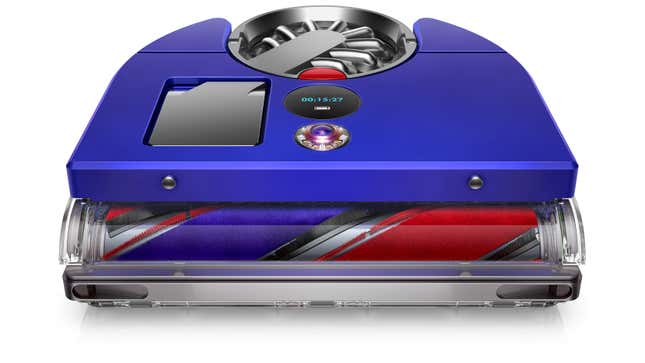
Since then, Dyson has released several new versions of the original 360 Eye robovac, but the new Dyson 360 Vis Nav introduces a major redesign, with new features specifically designed to meet the deficiencies of the original.
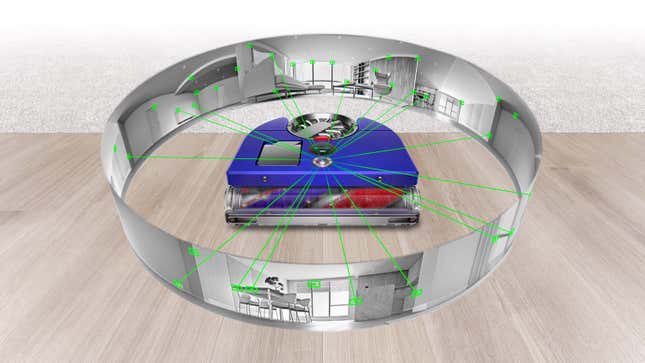
Like the original, a camera with a fish-eye lens on top of the robovac uses “Simultaneous Localization and Mapping (SLAM) technology” to track its movement in a room by finding recognizable landmarks and triangulating in its location. The new model also promises better low light performance thanks to eight LEDs around the lens that can be switched on selectively to illuminate tracked landmarks, which should also help making sure the robovac doesn’t get lost when cleaning under furniture.
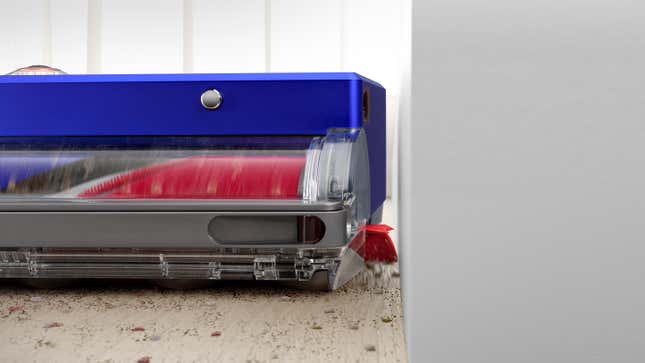
The Dyson 360 Vis Nav’s spinning brush bar has a combination of fluffy nylon, carbon fiber filaments, and stiff nylon bristles to remove hair, dirt, and dust, but the coolest cleaning feature here is the little arm that comes out from the side of the robovac when it moves against a wall. The arm then redirects the suction to ensure that the dirt in the outermost parts of your room is also absorbed. What’s the point of using a robot vacuum if you have to go along and clean all the areas without it afterwards?
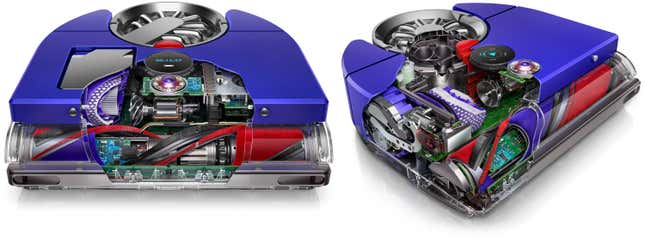
Dyson promises up to 50 minutes of cleaning time before the 360 Vis Nav navigates back to its dock for recharging, then resumes cleaning where it left off. It can be monitored and scheduled using Dyson’s app, while the robovac’s sensors also help create dust maps in your home so you can identify where your dirt is coming from and proactively deal with it. this is to reduce the amount of cleaning you need. will do.
It is not yet known what the price of the new Dyson 360 Vis Nav robovac will be, but we expect it to be more expensive than the original $1,000 Dyson 360.
Dyson Submarine Wet Roller Head
Dyson floor cleaning tools are known for their ability to effectively absorb dry dust and debris, but food stains, dirt stuck to hard surfaces, and wet spills often require a different cleaning tool.

For the first time, Dyson has introduced a wet floor cleaning device called the Dyson Submarine, which will be included with the Dyson V15s Detect Submarine and Dyson V12s Detect Slim Submarine vacuums as a swappable cleaning head (but cannot be used on its own. an upgrade for other Dyson vacuums).
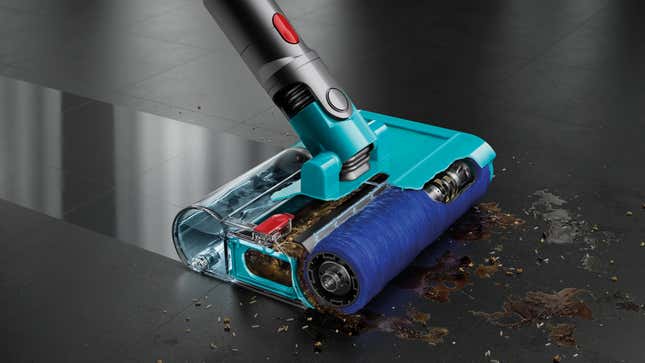
Inside the Dyson Submarine are two separate water tanks. One is designed to hold clean water (although Dyson says users can also fill it with water mixed with a properly diluted cleaning solution) and pump it through a ” eight-point hydration system” to evenly saturate the wet roller head as it rotates and scrubs the floor. while the cleaning head is pushed into hard surface floors.
As the wet roller rotates, a “sustainable plate” pressed into it acts as a squeegee to capture used water and direct it to a waste tank so that only clean water can be used on your floor. Unlike a carpet cleaner, however, the suction from a vacuum is not used to remove dirt and water from the floor. The included Dyson vacuum is only used to power the Dyson Submarine, and the cleaning head is only designed for use on hard floors.
Pricing and availability for the Dyson V15s Detect Submarine and Dyson V12s Detect Slim Submarine vacuums (which include the Dyson Submarine accessory) have not yet been revealed.
Dyson Gen5detect and Gen5outsize Cordless Vacuums
Cordless vacuums are still what Dyson is best known for, and today the company announced two new additions to that category: the Dyson Gen5detect and the higher-capacity Gen5outsize, both of which use the fifth-generation The company’s Hyperdymium electric motor, which is known for spinning up to 135,000RPM to create more suction in a smaller space.
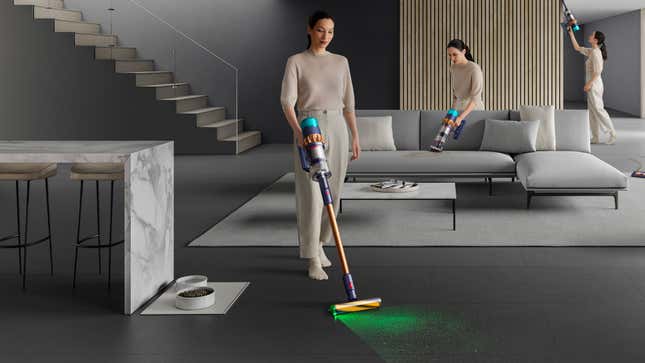
The Dyson Gen5detect has improved laser optics on its fluffy roller cleaning head—a feature we found it extremely satisfying—which now offers more light with double the light coverage so you can see even more of the microscopic dust you need to clean. But despite the improved performance, both models now offer up to 70 minutes of cleaning time on a single charge when using their lowest power in eco mode.
Both models will be available in the US starting June 6, with the Dyson Gen5detect selling for $949 and the Dyson Gen5outsize coming with a $1,049 tag.
Dyson Purifier Big+Quiet Formaldehyde
A few years ago, Dyson released a personal air purifier that broke away from the iconic design of its blade-less fans. Instead of pushing air through a ring, the Dyson Pure Cool Me has a semi-circular sphere that sits on a base with a filter. The design supposedly allows for more precise air delivery. Even if you can’t buy the Dyson Pure Cool Me already in North America, its unique design is used in a new air purifier designed for “large, open-plan spaces.”
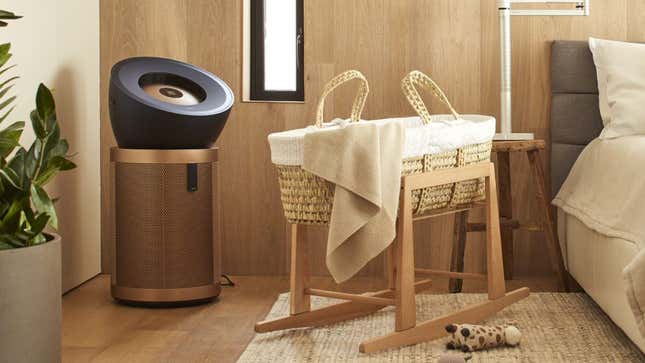
Looks like a droid from Star Wars universe, a blast of air from the Dyson Purifier Big+Quiet Formaldehyde can be felt up to 32 feet away, and it’s powerful enough to provide about 1,000 square feet of air filtration with a HEPA H13 filter that removes everything from formaldehyde (as the name. means), to nitrogen dioxide, to particles even as small as 0.3 microns in size, which includes some viruses.
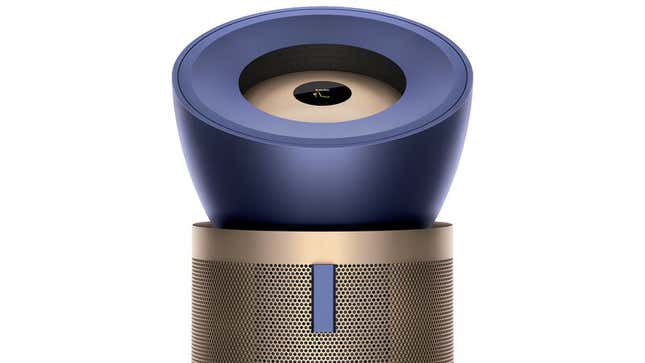
The Dyson Purifier Big+Quiet Formaldehyde is also designed to be one of Dyson’s quietest air filtration fans to date, measuring 56 decibels thanks to the technology inside that also includes a resonator that interrupts sound waves and functions like ANC tech inside your wireless headphones. . The air purifier is also loaded with sensors to monitor the quality of the air level in the room where it is used. You can access a graph of its measurements over time on an LCD screen on top of the purifier and through the Dyson app, which allows the machine to activate its air purification when needed, to help with extend the life of the replaceable filter.
Pricing and availability details for the Dyson Purifier Big + Quiet Formaldehyde are yet to be announced.
